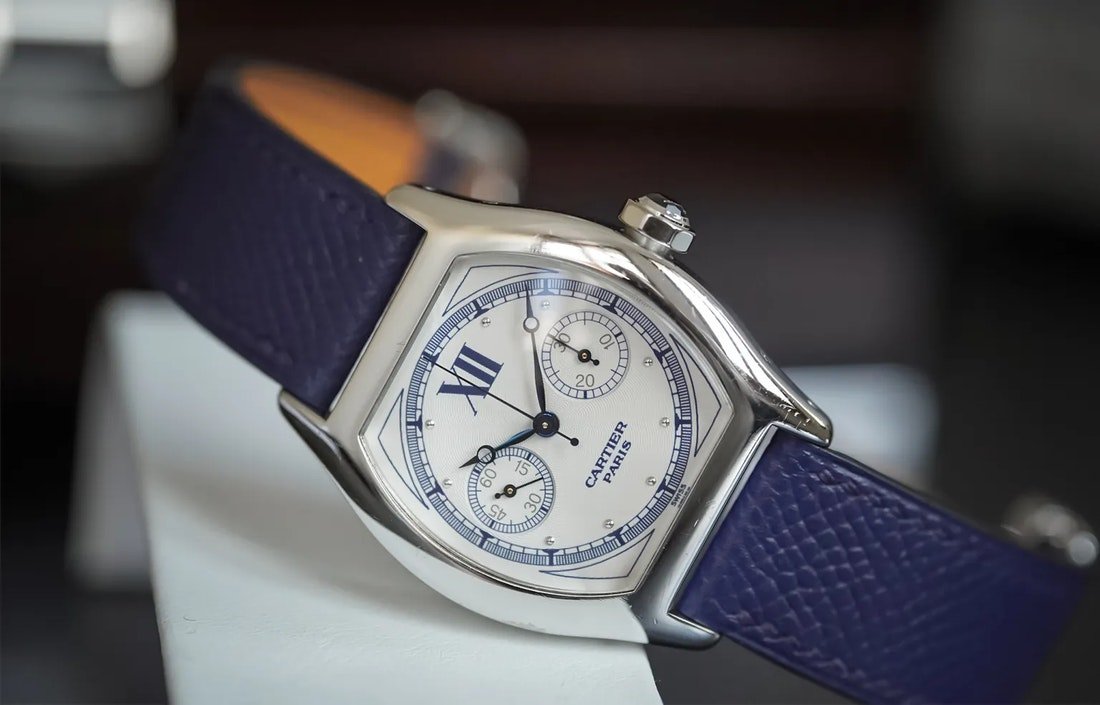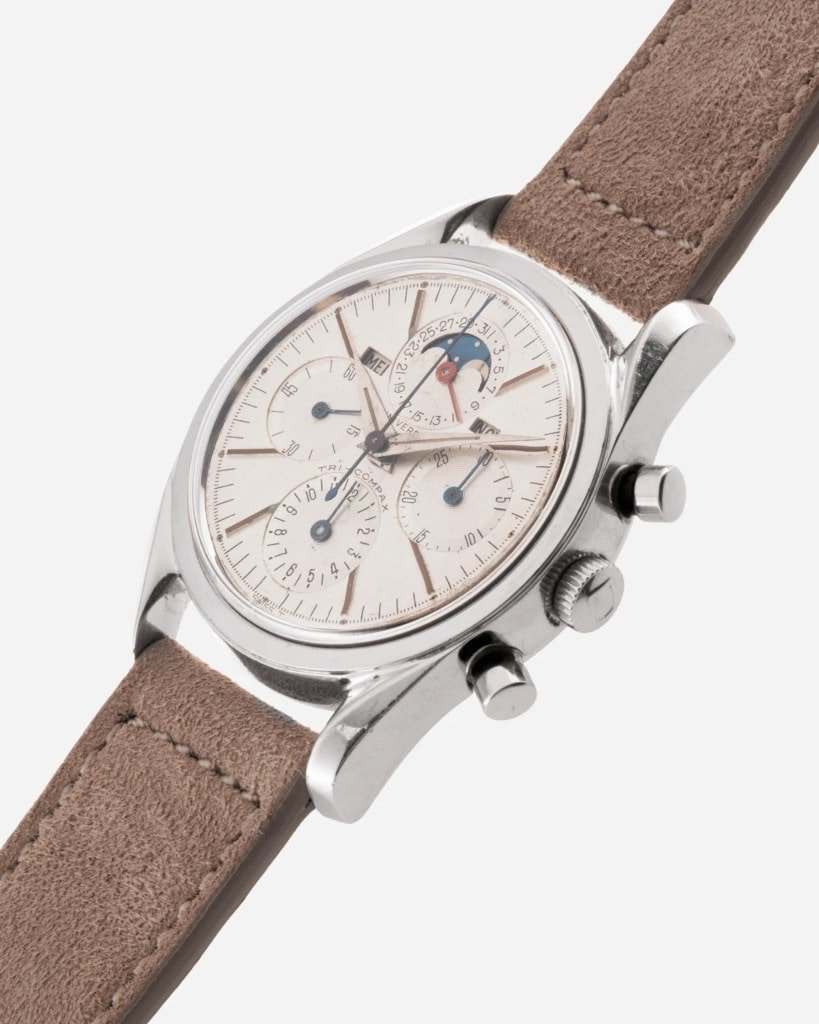Citizen Chronometer in Steel; Universal Geneve Compax; A CPCP Tortue Monopoussoir
Today, we’re doing something a bit different. One of my favorite follows — both website and Instagram — is Hairspring. The goal of Erik, who runs Hairspring, is simple: To curate the most interesting, rare, undervalued, or otherwise exceptional watches for sale from around the interenet. From all over, by and for enthusiasts.
Ever day, he’ll post some of the best watches he finds from dealers and other sites around the internet. Having followed Hairspring for a while, his tastes are quite varied (and good!): vintage, neo-vintage, independents, and everything in between.
I am hoping to, on a regular basis in 2022, feature some of Hairspring’s picks here in Rescapement. There are tons of watches listed for sale every single day on the internet nowadays, and to me, Hairspring is one of the best at curating the internet down into a handful of picks.
I’ll let Hairspring take it away now by featuring three of the watches posted about over the past week. For the entire selection of seven watches (Erik’s a busy guy!) Hairspring has posted in the past week, head to hairspring.com.
Words by: Hairspring; photos to their respective sellers
Citizen Chronometer in Steel
Bear with me; this one requires some exposition. Even if I constantly strive to feature the most interesting and niche selections across the entire market, I’d like to think every now and then I can still surprise. However, this morning, even I’m surprised. I’m surprised by how much mystery surrounds this Citizen Chronometer, how beautiful its designs remain, and how intricate its construction was. Sometimes the history of even the most benign watch can leave one speechless after a bit of scholarship.
To the best of my understanding, the Citizen Chronometer was borne to demonstrate the marque’s flagship ability. Not just to rival Grand Seiko, but raise the entire name’s stock. Post-WWII, Citizen had seen steadily increased popularity in Japan, but not outside. That began to shift in 1959, when, to make a name for themselves, they launched Japan’s first water-resistant offering: the Parawater. This led to a series of more ambitious launches to flywheel Citizen into the worldwide Zeitgeist, including the huge quartz push and Eco-Drive of the 1970s. It didn’t quite work out as intended, but that is the backdrop against which this timeless design rests.
The Chronometer was released in 1962. It carried an oversized balance (13.5mm) with ultra-fine adjustment which beat at a leisurely 18800 vph to ensure consistent amplitude over its laudable 53-hour reserve. The result was a chronometer spec -1 /+10s day. This is the antithetical approach of Grand Seiko’s 36000 angular cased, technological masterpieces. Citizen chose a classic (37mm) case proportion and movement architecture, but executed each with thorough attention. I’m not exaggerating.
It is said that the production and assembly of the Chronometer was entirely separate within Citizen, where one skilled watchmaker saw one piece’s construction through from beginning to end over the course of one day. This was the old way, from the Shokosha Watch Research Institute before it became Citizen. The line was not commercially a huge success, the process could not be scaled, and the line folded five years later.
This example sports a radially brushed silver dial with applied, beveled indices and dauphine hands. It is cased in steel though gold was also available. The text simply reads Citizen Chronometer, 31 Jewels. The case is razor-sharp with lines proud. It comes from a midsize Japanese retailer, who called out that they acquired it from a well-regarded Citizen collector. These aren’t hugely common and this is a great example.
Find this Citizen Chronometer here from Arbitro for 5830 USD.
2396 Cartier CPCP Tortue Monopoussoir
CPCP was an incredible undertaking and era of Cartier but, for me, two stand above the rest. Cartier’s Tank and Tortue Monopoussoirs represented the best of then-contemporary independent watchmaking, unrepresented.
Let me explain. Think of the Monopoussoirs as a hipster’s 90s independent, with some of the greatest modern names contributing to its THA-ébauche calibre before it was cool to do your own thing. Journe, Flageollet (now De Bethune), and Vianney Halter all had a hand in constructing this truly impressive calibre that was unlike anything else. The monolithic Cartier then shrouded their work in classical elegance. Real scholarship has only formed in the last decade or so around Cartier’s CPCP neo-era and the significant strides independent watchmakers were making on behalf of the marque name.
What’s so special about this monopusher chronograph? The 045 used a clutch system and swivel pin to engage the chronograph wheel. These extra components remove the jolt that the central chronograph hand will experience with a lateral clutch. This was a lot of engineering, a ground-up chronograph redesign for a mono. All for the sake of an elegant chronograph engagement. That’s commitment to the brand ethos, a round of applause please. Bridges and plates were decorated with the Cartier logo and finished to a high standard by hand. The dial is printed blue with a thick guilloché and breguet hands. Around 200 of these calibres could be built yearly, which means there is a total production of under 2000 pieces (CPCP ran from 1998 to 2008).
The 35x43mm white gold case is unmarred by time here. The elongated curved radius on either flank appears without dent. Its dial is perfect and calibre said to be running well. The watch comes with a full set with Cartier’s original deplyant clasp. It comes from a well-regarded Swiss retailer.
Find this Tortue Monopoussoir here from K2 Luxury for 69000 USD.
Universal Geneve Tri-Compax
For all intents and purposes, Universal’s Tri-Compax was the business as watches went post-WWII. Introduced at Baselworld 1944, the triple-complication (it’s often mistakenly assumed that “tri-compax” refers to the triple chronograph sub dial configuration) aviator’s offering was every bit as stylish as it was complicated. Derived from a pilot’s chronograph that helped win the war, the Tri-Compax incorporated a full calendar, moonphase, and chronograph within a vertically and horizontally symmetric dial configuration. It has been a true classic and lauded reference since inception, one which still feels perfectly designed nearly a century on.
Initial Tri-Compax references featured two dial configurations. The more common /2 variant featured a blue outer tachymeter scale. This /1 has long indices which extend all the way out to the chapter ring, giving its dauphine handset strong counterparts visually. The 36mm case incorporates Genta’s twisted lugs, first debuted on the Polerouter for UG. Its moonphase date hand alone was finished in a spectacular red, set against a metallic blue golden wheel. All of this is contrasted with a linen/brush textured dial background. All models featured a signed crown and UG’s now-legendary calibre 281, a fully in-house, manually-wound, column-wheel calibre and one of the more technically sophisticated of the post-war era.
Simply put, this example is stronger than most. Its case is defined with a serial number still visible on back. The crown is signed. Lume is a deep gold but matched evenly across all applications. Pushers are correct. It is said to be running well and comes from a well-regarded retailer.
Find this Linen Tri-Compax here from S. Song for 13500 USD.
For all of Hairspring’s picks, head to hairspring.com. And for even more, make sure to follow @hairspringwatches.









